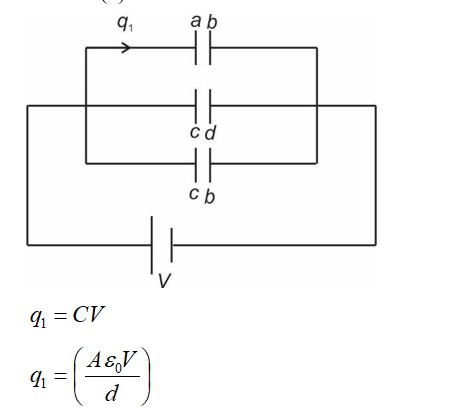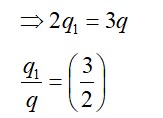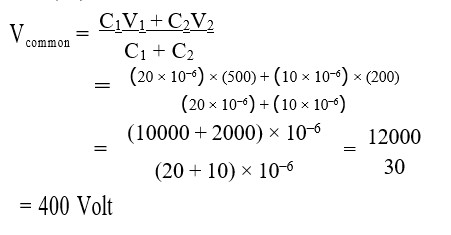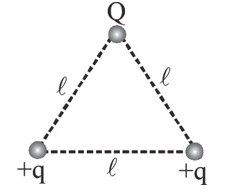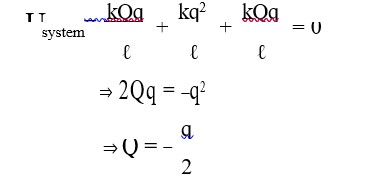Two isolated conducting spheres S₁ and S₂ of radius (2/3)R and (1/3)R have 12µC and -3 µC charges, respectively, and are at a large distance from each other. They are now connected by a conducting wire. A long time after this is done the charges on S₁ and S₂ are respectively:
Two isolated conducting spheres S₁ and S₂ of radius (2/3)R and (1/3)R have 12µC and -3 µC charges, respectively, and are at a large distance from each other. They are now connected by a conducting wire. A long time after this is done the charges on S₁ and S₂ are respectively:
Option 1 -
+4.5µC and -4.5µC
Option 2 -
4.5µC on both
Option 3 -
6µC and 3µC
Option 4 -
3µC and 6µC
-
1 Answer
-
Correct Option - 3
Detailed Solution:When the two conducting spheres are connected by a wire, they will reach the same electric potential, V.
The total charge Q_total = 12µC + (-3µC) = 9µC. This total charge will redistribute.
Let the final charges be q? and q? + q? = 9µC.
The potential of a sphere is V = kq/r.
V? = V?
k q? /R? = k q? /R? ⇒ q? /R? = q? /R?
q? / (2R/3) = q? / (R/3) ⇒ q? /2 = q? ⇒ q? = 2q?
Substitute this into the charge conservation equation:
2q? + q? = 9µC ⇒ 3q? = 9µC ⇒ q? = 3µC.
Then, q? = 2 * 3µC = 6µC.
The final charges are 6µC and 3µC.
Similar Questions for you
For force between q1 and q2 is maximum, q1 = q2
When positive charge moves from low potential to high potential region, work is done against electric field and potential energy increases.
Taking an Exam? Selecting a College?
Get authentic answers from experts, students and alumni that you won't find anywhere else
Sign Up on ShikshaOn Shiksha, get access to
- 65k Colleges
- 1.2k Exams
- 679k Reviews
- 1800k Answers


